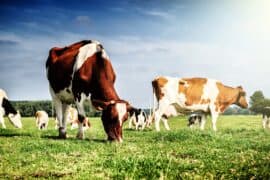Blanding's turtle
(Emydoidea blandingii)

Description
Blanding's turtle (Emys blandingii or Emydoidea blandingii) is a semi-aquatic turtle of the family Emydidae. This species is native to central and eastern parts of Canada and the United States. It is considered to be an endangered species throughout much of its range. Blanding's turtle is of interest in longevity research, as it shows little to no common signs of aging and is physically active and capable of reproduction into eight or nine decades of life. Blanding's turtle is a medium-sized turtle with an average straight carapace length of approximately 18 to 23 cm (7.1 to 9.1 in) with a maximum of 25.5 cm (10.0 in). A distinguishing feature of this turtle is the bright yellow chin and throat. The carapace, or upper shell, is domed, but slightly flattened along the midline, and is oblong when viewed from above. The carapace is speckled with numerous yellow or light-colored flecks or streaks on a dark background. The plastron, or lower shell, is yellow with dark blotches symmetrically arranged. The head and legs are dark, and usually speckled or mottled with yellow. Blanding's turtle is also called the "semi-box" turtle, for although the plastron is hinged, the plastral lobes do not shut as tight as the box turtles'. Blanding's turtle takes 14–20 years to reach sexual maturity. Mating probably occurs in April and early May with nesting beginning in early June and lasting throughout the month. The clutch size varies from region to region. In New York, the clutch size ranges from 5–12 eggs with an average of eight. The geographic range of E. blandingii centres on the Great Lakes, and extends from central Nebraska and Minnesota (where it twice failed to become the state reptile) eastward through southern Ontario and the south shore of Lake Erie as far east as northern New York. In Nebraska, this turtle is uncommon in the eastern portion of the state, but common to abundant in the Sand Hills region lakes, ponds, and streams. There are also isolated populations in southeastern New York (Dutchess County), New England, and Nova Scotia. Its general habitat is wetlands with clean shallow water. It is known to bask on logs, and will wander far from water, particularly when nesting. It generally nests in sunny areas, with well drained soil. Younger turtles may bask on sedge and alder hummocks. Young will often travel far in search of mating sites, new habitat, or new food sources, as do elder turtles.
Taxonomic tree:







